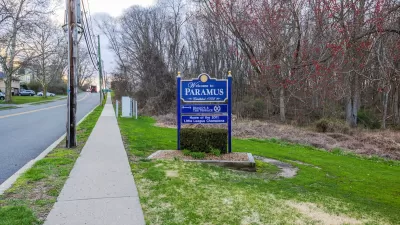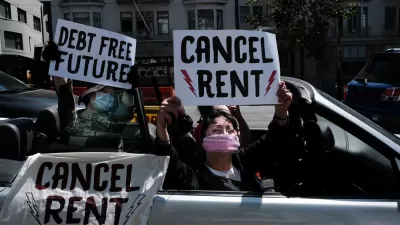From the United States to the United Kingdom, housing costs are eating up a larger percentage of household income.

According to an article by Mark Edward Rose posted on the World Economic Forum site, “There are insufficient subsidized or social homes or 'attainable' housing options for low- and middle-income households.” As Rose points out, “Looking at the heatmap of nationwide rent burden in the U.S. below, a stunning proportion of the country sees at least 30% of households rent burdened. This indicates a critical lack of supply for a range of income levels.”
While the crisis in the United States is particularly severe, other countries face similar problems. “In England, data from the Office of National Statistics reveals that only the cheapest 10% of houses are now considered affordable for the middle-income bracket.”
For many households, this means that renting is significantly cheaper per month than owning a home. “In the U.S., the cost of an average monthly home payment is now $3,322 – the average monthly new lease payment is almost $1,000 cheaper.”
According to Rose, there are four important ways the public sector can support more affordable housing. These include ‘sensible density,’ supporting the construction of denser housing in areas where it is feasible and appropriate; engaging the community to find locally sensitive solutions; implementing reforms such as reducing parking requirements that decrease the cost of housing; and building sustainable infrastructure to prepare neighborhoods for more density and protect cities from the impacts of climate change.
FULL STORY: Why the new starter home is a rental for many low and middle-income households

Planetizen Federal Action Tracker
A weekly monitor of how Trump’s orders and actions are impacting planners and planning in America.

San Francisco's School District Spent $105M To Build Affordable Housing for Teachers — And That's Just the Beginning
SFUSD joins a growing list of school districts using their land holdings to address housing affordability challenges faced by their own employees.

The Tiny, Adorable $7,000 Car Turning Japan Onto EVs
The single seat Mibot charges from a regular plug as quickly as an iPad, and is about half the price of an average EV.

Seattle's Plan for Adopting Driverless Cars
Equity, safety, accessibility and affordability are front of mind as the city prepares for robotaxis and other autonomous vehicles.

As Trump Phases Out FEMA, Is It Time to Flee the Floodplains?
With less federal funding available for disaster relief efforts, the need to relocate at-risk communities is more urgent than ever.

With Protected Lanes, 460% More People Commute by Bike
For those needing more ammo, more data proving what we already knew is here.
Urban Design for Planners 1: Software Tools
This six-course series explores essential urban design concepts using open source software and equips planners with the tools they need to participate fully in the urban design process.
Planning for Universal Design
Learn the tools for implementing Universal Design in planning regulations.
Smith Gee Studio
City of Charlotte
City of Camden Redevelopment Agency
City of Astoria
Transportation Research & Education Center (TREC) at Portland State University
US High Speed Rail Association
City of Camden Redevelopment Agency
Municipality of Princeton (NJ)





























